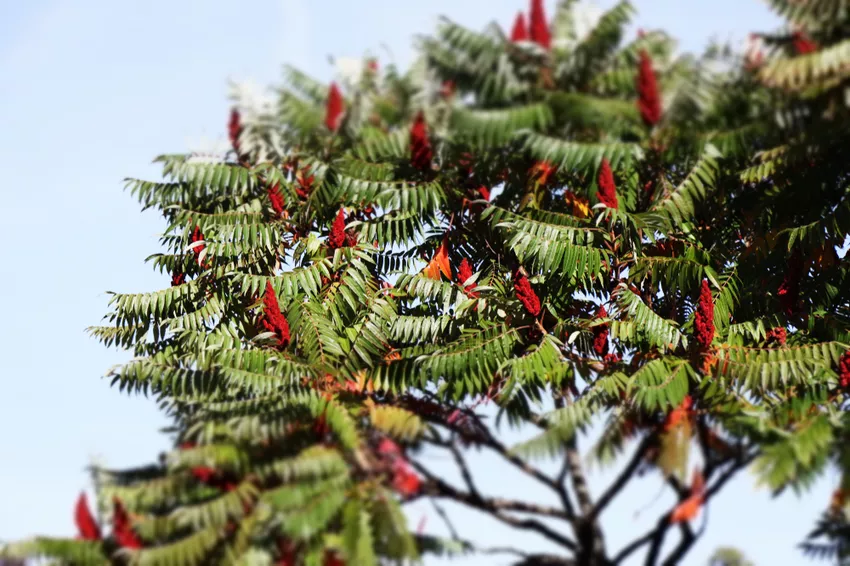The vinegar tree is a widespread ornamental tree that was not originally widespread in Europe. Its biology contains interesting details, but the tree does not have a good reputation from a nature conservation point of view.
 The vinegar tree is also called deer butt sumac
The vinegar tree is also called deer butt sumac
systematics and origin
The vinegar tree bears the Latin name Rhus typhina. It belongs to the genus Rhus, which contains between 150 and 250 species. Another name for the vinegar tree is deer butt sumac. It grows as a multi-stemmed shrub that sheds its leaves in winter. The original distribution area is in North America, where the vinegar tree grows in open landscapes, preferably on stony and sandy subsoil.
Particularities:
- young twigs are dusty blue and densely covered with velvety hairs
- Age: 60 to 70 years
- rarely grows as a single-trunk tree
biology
Vinegars are unisexual and dioecious. They develop male and female flowers that flower at different times on an individual. This prevents self-pollination. Insects are responsible for fertilizing the female flowers. After the flowering period, which extends from June to July, fruit clusters develop from the female flowers. It is typical that fruits are formed even after fertilization has not taken place.
Leaf Features:
- leaves pinnate
- alternately arranged
- Leaflets with a serrated leaf edge
root growth
The shrubs grow between three and seven meters high, with optimal site conditions up to twelve meters high. Shallow-rooted, the shrubs develop a creeping root system close to the surface. The extent of the roots is far-reaching. They often grow up to ten meters away from the mother plant. They have a strong tendency to develop shoots. These root suckers are more likely to appear when the stems and roots have been damaged.
Conservation status and ornamental value
The ornamental value of these trees is high because of the attractive autumn colors. However, when planting, you should note that the vinegar tree is not a native species. If it grows uncontrollably, it crowds out the native flora. Its intense urge to spread earned the vinegar tree the status of an invasive neophyte. While there are no legal regulations in Germany for using them as ornamental trees, planting the shrubs is now forbidden in Switzerland. You should take appropriate measures to protect other species of plants in your garden. Root barriers or cultivation in buckets are effective methods.